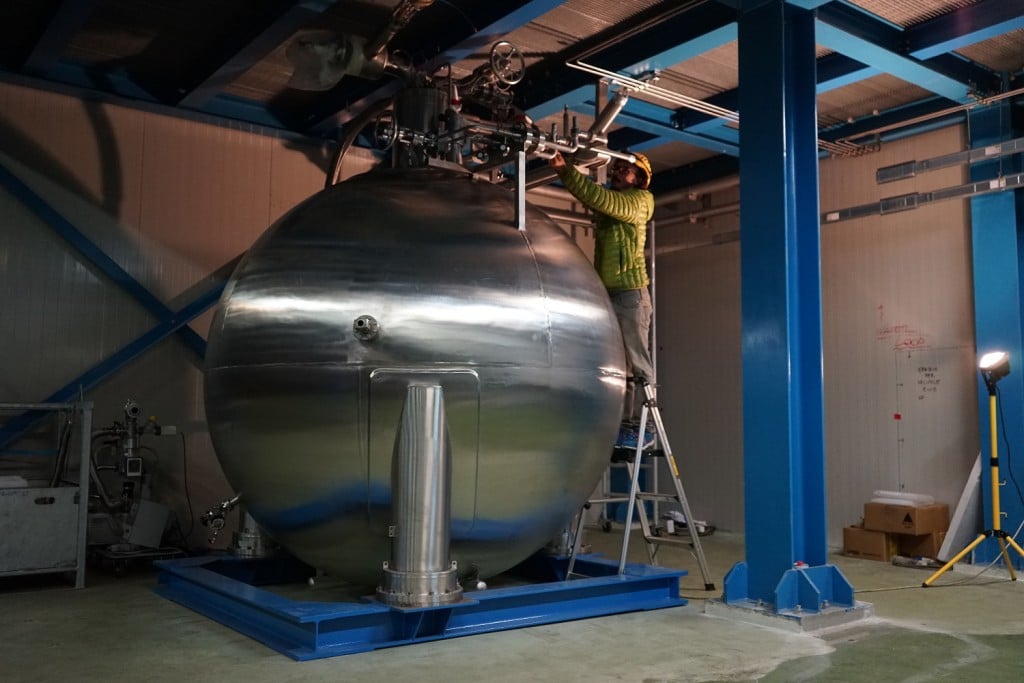XENON1T, the biggest experiment to find dark matter is in Italy
INFN has started one of the biggest experiments that will mean a juncture for the scientific speculation: the confirmation of the “Supersymmetry” theory or its inescapable end. This is XENON1T.

INFN - Xenon1T
By Massimiliano Russo
A few days ago, a press release from INFN (National Institute of Nuclear Physics) has started one of the biggest experiments that will mean a juncture for the scientific speculation: the confirmation of the “Supersymmetry” theory or its inescapable end.
Almost everyone has heard about dark matter, that part of matter that cannot be observed due to the fact that it doesn’t emit electromagnetic radiations as every other celestial body does, but whose effects can be verified considering its gravitational influence on stars and galaxies. Actually, it constitutes almost 90% of the total mass of the Universe. First speculations about this matter started in the 30’s without reaching experimental proves, not even now days; and this is why the XenonIT experiment is so great, not so much due to the experiment itself (there are 8 more similar all over the world), but due to its majesty. The experiment will have seat in Italy, in the National Laboratories of Gran Sasso (LNGS) and 21 research groups will take part in, guided by Elena Aprile of the Columbia University of New York, the president of INFN Fernando Ferroni and LNGS director Stefano Ragazzi.
The place of the experiment is crucially important, since the isolation must be maximum, until it reaches the ‘cosmic silence’, as physicists call it. This is why the National Laboratories of Gran Sasso have been chosen, since they are under 1400m of rocks, that is an efficient shield against cosmic radiations. But the shielding of the rock is not sufficient and to reveal the rare connection between dark matter and ordinary matter, something else is required. At this point the chemical element from which the experiment got its name comes into play: Xenon is a noble ultrapure gas which is cooled down at -95°C to make it liquid; it’s a very sensible element, almost lacking any radioactive isotopes that could interfere revelations. Besides, it has good auto-shielding capacities due to its high density. 3500kg of liquid xenon are immersed in a vacuum-insulated double-wall cryostat; but the most important part of the experiment is the detector (TPC) which measures the tiny flashes of light and charge which are generated when a particle interacts with the xenon. To guarantee an additional shielding against ambient radiations that could alter the detector, the cryostat is immersed in 700m3 of ultrapure water inside of a 10m high container, equipped with 84 photomultipliers whose task is to reveal the passage of muons, particles produced by cosmic radiations which are able to reach the Earth thanks to its speed.

But how is the XenonIT able to ‘capture’ dark matter?
Physicists affirm that dark matter in which the Earth moves can connect with atomic nuclei of a revealing material releasing a little quantity of energy, so little that only high sensitivity instruments can observe it. In the XenonIT, iteration between dark and ordinary matter produces in liquid xenon two signals: a primary light ray and a charge signal that generate a second signal of delayed light. These signals can be captured by 248 sensitive photo sensors, which are each capable of detecting even single photons; the scientists use this information to reconstruct the position of the particle interaction within the detector, as well as the deposited energy and whether the interaction may have been induced by dark matter.
The experiment will start in the spring and data will be registered for two years, to find a way to support the Supersymmetry theory that since 2013 is in a standstill, seeing as the littler brother of the XenonIT, that is the ‘Large Underground Xenon’ (LUX) which is working with 370kg of xenon in South Dakota, hasn’t given any results.
So all we can do is to wait for the first results, hoping for another great discovery!
